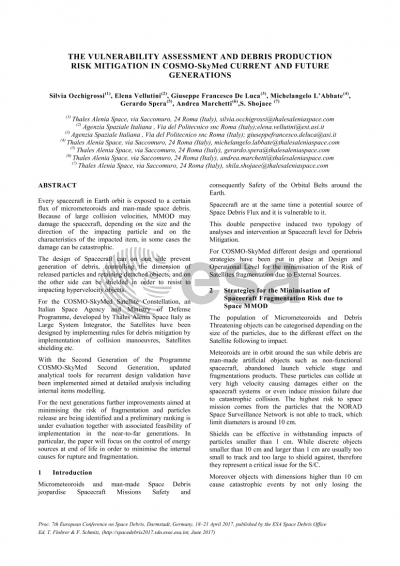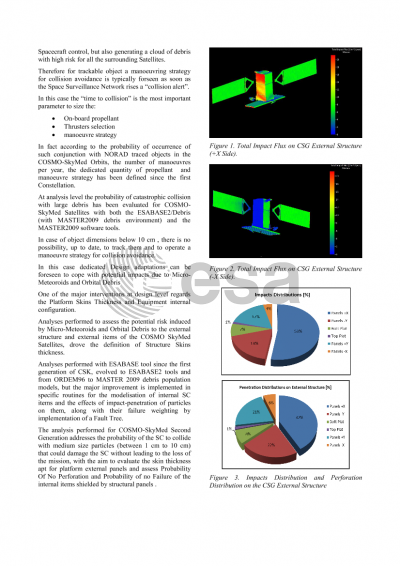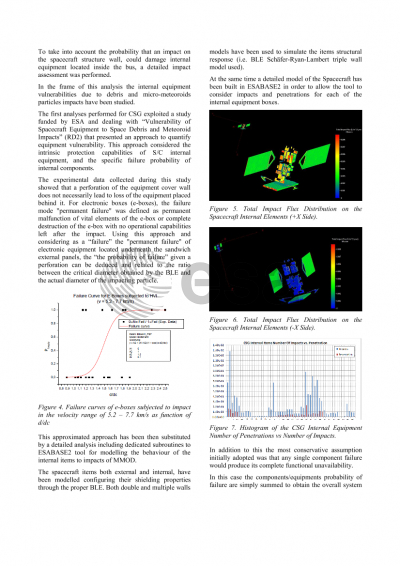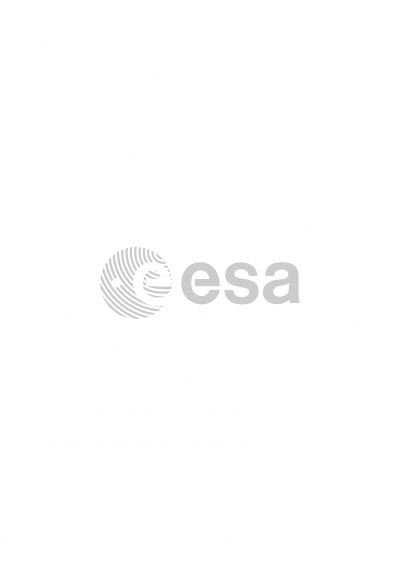Document details

Abstract
Every spacecraft in Earth orbit is exposed to a certain flux of micrometeoroids and man-made space debris. Because of large collision velocities, MMOD may damage the spacecraft, depending on the size and the direction of the impacting particle and on the characteristics of the impacted item, in some cases the damage can be catastrophic.
The design of Spacecraft can on one side prevent generation of debris, controlling the dimension of released particles and retaining detached objects, and on the other side can be shielded in order to resist to impacting hypervelocity objects.
For the COSMO-SkyMed Satellite Constellation, an Italian Space Agency and Ministry of Defense Programme, developed by Thales Alenia Space Italy as Large System Integrator, the Satellites have been designed by implementing rules for debris mitigation by implementation of collision manoeuvres, Satellites shielding etc.
With the Second Generation of the Programme COSMO-SkyMed Seconda Generazione, updated analytical tools for recurrent design validation have been implemented aimed at detailed analysis including internal items modelling.
For the next generations further improvements aimed at minimising the risk of fragmentation and particles release are being identified and a preliminary ranking is under evaluation together with associated feasibility of implementation in the near-to-far generations. In particular, the paper will focus on the control of energy sources at end of life in order to minimise the internal causes for rupture and fragmentation.
Preview






